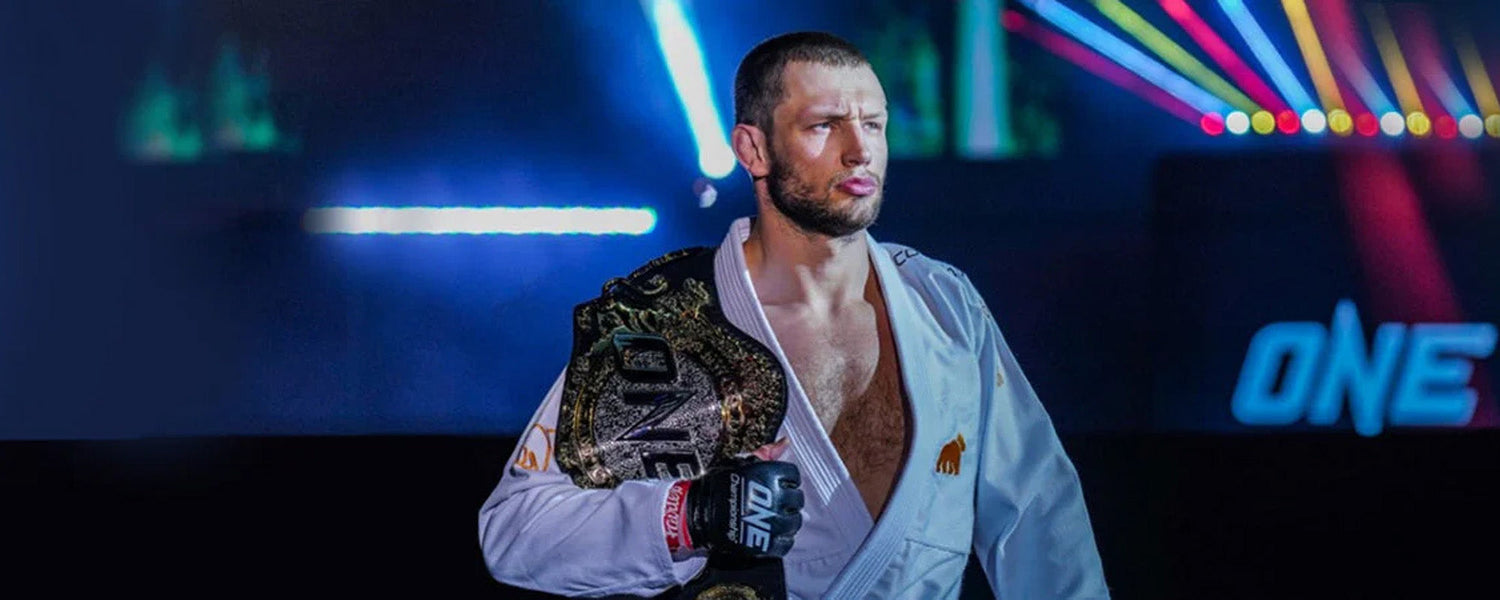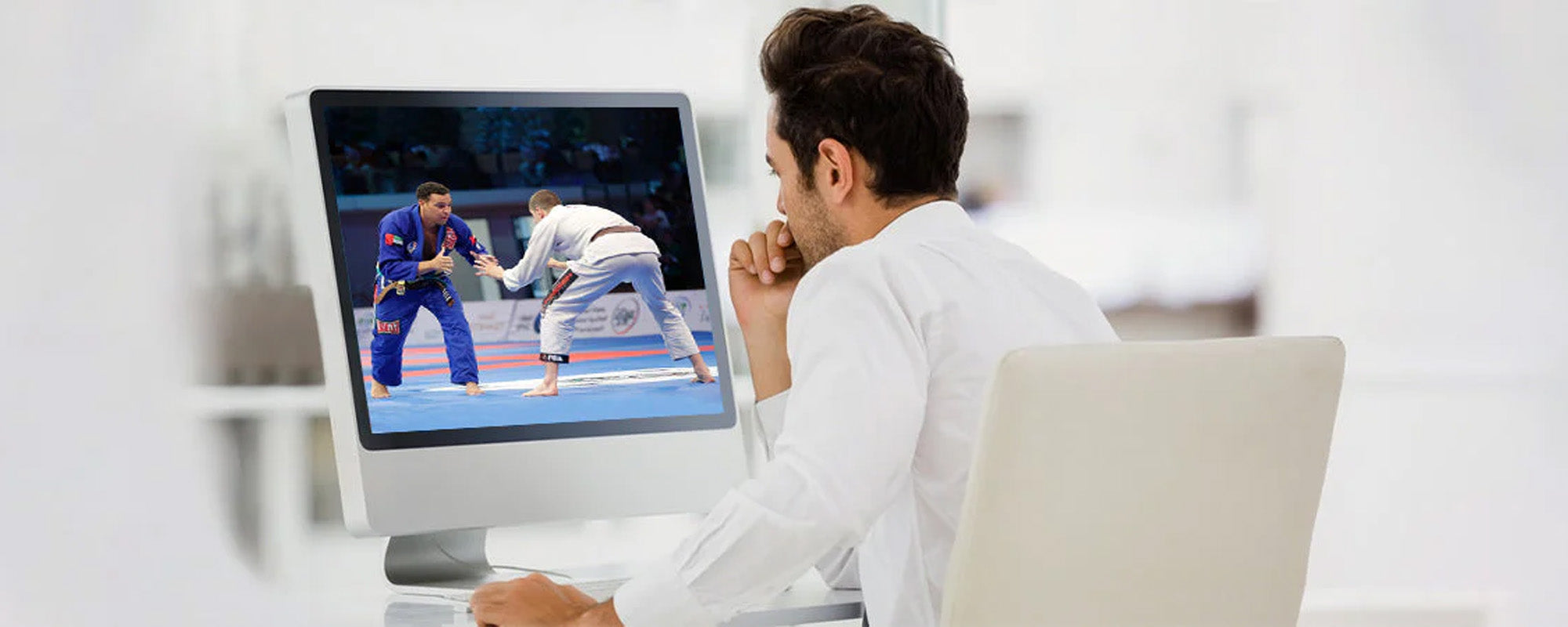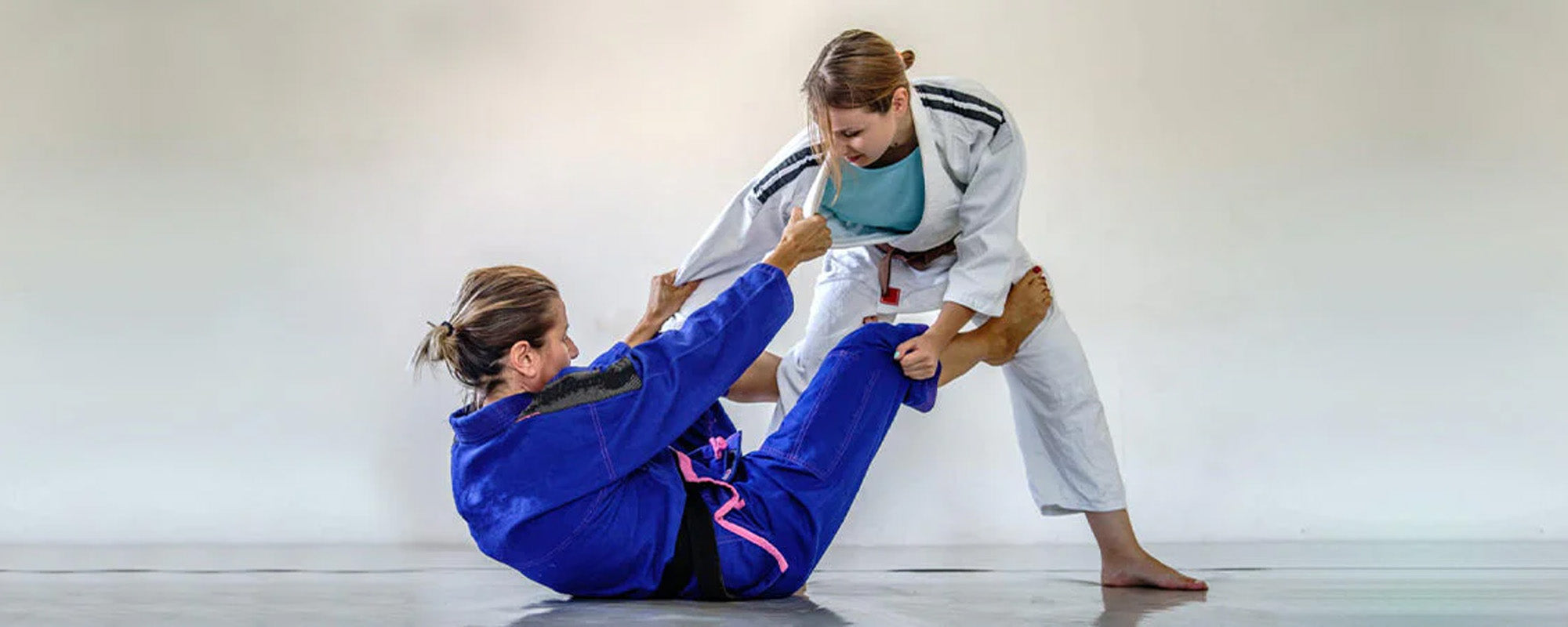Table of content
BJJ is a submission grappling sport which involves choke holds and submission techniques to defeat the opponent. To apply those choke holds and submissions, a fighter needs to have a strong grip, stamina, muscle, and core strength.
BJJ neck strengthening exercises mostly work on making the neck muscles stronger. These exercises not only target the fat around the neck region but also increase the size of the muscles.
1. How Does BJJ Impacts Your Neck?
Brazilian Jiu-Jitsu is a submission grappling sport. The whole point of BJJ is to gain control over your opponent and get the submission. The neck is the main focus of a fighter to apply submissions.
BJJ prepares your neck in a way that you might feel a strain or muscle tear in your neck. It often induces injuries and soreness in the neck. If such a condition is ignored it can lead to complications and serious consequences. Pain in the neck occurs when it’s pushed beyond its normal range of motion.
BJJ can also make your neck stronger because of the neck strengthening exercises. Those exercises not only make the neck stronger but also cure it of the injuries and strains which are caused during training sessions.
2. Exercises To Build Bigger & Stronger Neck For BJJ
Neck Strength is very important for BJJ as it helps to roll and allows BJJ practitioners to withstand submissions. It builds flexibility and endurance and ultimately ensures safety from neck cramps and minimizes the risk of neck injury. A BJJ practitioner with a strong neck will be able to resist his opponent's chokes for a longer time. These exercises also induce flexibility in the practitioner’s neck and allow him a greater range of motion during BJJ competitions or training sessions.
2.1. Isometric Exercise For Neck Strengthening
Isometric strength of the neck is the most crucial one because it determines the right movement of the practitioner’s head during BJJ training or competitions. If the fighter’s neck is not strong enough, it makes the neck susceptible to many injuries and often results in the weak execution of techniques like the Granby Roll.
Isometric exercises develop the strength in the neck that allows the fighter to resist from the opponent’s pushing and pulling in the defense of triangle submission.
In these exercises, the fighter’s body movement is minimal but his neck is still strengthening as neck muscles are in constant motion.
To perform this exercise,
- The fighter takes a resistance band.
- The band is placed on the practitioner’s neck.
- After that, the practitioner pulls the band with each side of his head at a 90-degree angle.
- The resistance band is stretched to the four sides.
- Each side is stretched for 20 to 30 seconds.
| Circuit 1/ Side 1 | Circuit 2/ Side 2 | Circuit 3/ Side 3 | Circuit 4/ Side 4 |
|---|---|---|---|
| 20 to 30 sec | 20 to 30 sec | 20 to 30 sec | 20 to 30 sec |
2.2. Lower Traps
Lower traps not only ensure easy neck movement but also helps in the extended mobility of the head, arms, and shoulders. They help to make the neck strong and even greater in size by extending them. Another benefit of lower traps is that they help to improve body posture. Since BJJ is focused on techniques and impeccable balance is the prerequisite of initiating successful submissions.
This exercise makes the neck and the lower back stronger so the fighter can have an explosive BJJ game and initiate brutal takedowns.
To Perform Lower Traps:
- The practitioner holds a quadruped position as his knees and hands are on the ground.
- He holds a right-angled position.
- The practitioner moves his back along with his neck in an upward and downward position.
- He holds that position for 40 to 60 seconds.
2.3. Iron Neck 360 Spin
The ligaments and the muscles in the neck are very delicate. During BJJ practice, they are prone to injury. The strengthening of these ligaments not only makes the neck stronger but is also responsible for connecting the cervical vertebrae and keeping them stable. Iron neck exercises tend to make the neck stronger which eliminates the chances of neck injury or neck cramps. It trains the isometric function of the neck at 360-degree angle, hence allowing movements in all directions.
To perform Iron Neck 360 spin,
- The fighter wears the iron neck and keeps its resistance level to zero on the initial level.
- By keeping the head and the neck in the same position, the fighter takes a 360 degree spin.
- Two to three sets of this exercise is completed with five to ten spins.
| Phases | Sets | Spins |
|---|---|---|
| 1 | 2 to 3 | 5 to 10 |
| 2 | 4 to 5 | 15 to 20 |
2.4. Resistance Band
Using a resistance band for building a bigger and stronger neck increases endurance in the fighter’s neck. Neck muscles become strong and as a result the fighter develops a better offensive game. Often during BJJ training intervals, the practitioner’s neck suffers from muscle tightening. Resistance band exercise helps to relieve those muscles.
To perform this exercise,
- The fighter takes a resistance band.
- He hangs that band on his neck and keeps both ends in his hand.
- After that the fighter pulls the resistance band and gives it a push.
- That sudden pull keeps his neck in the same spot.
2.5. Dumbbell Shrug
This exercise works on the trapezius muscles in the neck and helps to stabilize and strengthen them. Trapezius muscles are responsible for stabilizing the scapula. The upper fibers in the neck elevate because of this exercise and rotate the scapula. It extends the fighter’s neck making it flexible.
To perform Dumbbell Shrug:
- The fighter uses heavy weights for this exercise.
- He grabs the dumbbells and keeps them on his sides while his hands are in a straight position.
- The fighter keeps his neck in a relaxed state and head in a stable position.
- He squeezes his shoulders while keeping the hands straight and the neck relaxed.
2.6. Neck Crunches
Neck crunches help to make the neck bigger in size. It activates the hyoid muscles in the neck which run from the chin to the collarbone. These muscles are responsible for the efficient breathing process.
Mostly during submissions, when the fighter gets trapped in chokes, these muscles help to resist the choke for a longer time as the breathing capacity of the fighter increases and he can endure the pressure on his neck. It strengthens the deep neck flexors which are important for neck stability and strength.
To perform neck crunches:
- The fighter lies on the ground with his head up in the air, only his back and hips are on the ground.
- He holds his chin and lifts his head then drops it on the floor and straightens it.
2.7. Combine Resistance
Combine Resistance is an exercise in which the fighter combines lower trap exercises along with resistance band exercises. It has dual benefits as it builds flexibility as well as strength in the fighter’s neck. Often fighters develop a hunch in their neck due to constant fighting and strengthening exercises. That hunch forms when the descending part of the trapezius is strained.
To perform combined resistance exercise:
- The fighter takes a resistance band that is attached to a strong stable surface.
- The fighter then gets into the quadruped position.
- He keeps his head and neck in a neutral position.
- He moves in a forward and backward direction while stretching the resistance band.
2.8. Head Weight Exercise
These exercises focus on elevating the upper ribs so the breathing rate of the fighter is increased. Head weight exercises are responsible for the efficient movement of the largest muscles in the neck called the sternocleidomastoid. This motion helps the neck create resistance from cramps.
This exercise causes the scalenes muscles to stabilize the cervical vertebrae which are bones in the neck.
To perform head weight exercise:
- The fighter hangs a towel on any elastic surface or a rope.
- He then places his forehead on the towel and moves his head in a forward and backward motion.
- Due to the movement of the head, the fighter’s neck stretches in the same way.
- It makes the neck muscles bigger in size and elastic as well.
3.Why is Neck Strength Important For BJJ?
Neck strength is immensely important for BJJ. It builds endurance in the whole body of the practitioner. It also makes his BJJ game an explosive one.
3.1. Better Submission
Stronger neck allows the fighter to apply submissions easily. He can also keep his opponent in the submission for extended periods and easily gets the submission.
For example in the Guillotine Choke, after the application of this choke, the fighter falls in the backward direction and his opponent’s neck is bent. It can damage the neck ligaments of both fighters.
The fighter with a stronger, bigger and more flexible neck will have more chances to submit his opponent rather than the opponent who only focuses on his grip and core strengths. To be more precise, neck strength is as important core muscle strength.
3.2. More Chance To Protect Yourself
The fighter can also get trapped in an opponent's submissions, at that time a stronger neck will help him to stay longer and get out of the submission instead of tapping out and losing the fight.
So a strong neck will not let that happen. It will keep the ligaments and muscles safe at all times.
3.3. Increased Mobility
Stronger neck allows a greater range of motion to the fighter than the fighter with not a strong neck. The fighter can move his neck in maximum directions which gives him more chances to apply BJJ techniques.
For example in the triangle choke, the fighter has to keep his position. For that purpose, the neck strength of the fighter makes his position a strong one.
3.4. Less Chances of Injury
A fighter with less neck strength is more likely to submit out of the applied chokes of his opponent. It can also increase the chances of injuries in the fighter which can even lead to fatal consequences. To avoid such things, BJJ practitioners must develop immense neck strength.
3.5. Aids Core Strength
BJJ fighters pay more attention to their core, grips, and muscle strength. These strengths are no doubt very important to have a strong and explosive BJJ game. A strong neck aids the fighter’s core strength and makes him an excellent grappler.
If a fighter has excellent core strength but his neck is the weak region, in every training session he will get neck cramps and they will drastically affect his health and BJJ game. Whereas, a strong neck will allow the practitioner to apply techniques in almost every direction with no fear of self-injury.
3.6. Increased Blood Flow to the Brain
Neck is a very vulnerable region in BJJ. It is exposed to strangulation techniques, chokes, and cranks. Neck strength increases the blood flow to the brain which builds great memory and sharper vision in the fighter.
Neck strength increases the blood flow to the brain which means that more oxygen reaches the fighter’s head and eventually he will be able to get out of the opponent's applied blood chokes.
Those blood chokes hinder the blood flow to the practitioner’s brain. But a fighter with great neck strength will be able to invert the whole situation.
3.7. Good Posture
Your opponent can break your posture by breaking your head position. A strong neck will not let that happen. Rather it will provide you with a balanced and improved body posture. Professional grapplers have great neck strength which is why their opponents cannot get out of their submissions and they win the match.
A strong neck acts as a base for avoiding disruptions.
4. FAQs
4.1. Can BJJ Be Hard On Neck?
BJJ can be hard on the neck if the fighter does not perform any neck-strengthening exercise. Neck strength is as important as any other strength in BJJ.
4.2. Can Warming Up Before BJJ Training Reduce the Chances of Neck Cramps?
Warming up before BJJ training or competitions is highly recommended and beneficial. Along with it neck strength exercise also helps to decrease the risk of neck injury.
4.3. How does the Dumbbell Shrug Strengthen the Neck?
The dumbbell shrug stretches the neck muscles making them more durable in front of the blood chokes. Especially the trapezius muscles in the neck become strong.
5. Conclusion
Neck strength is essential for the fighter to develop because it allows him to apply submissions as well as to defend himself from them. It also allows him a greater range of motion and an improved body posture.
Photo Credit: @mixedmartialarts












Leave a comment
This site is protected by hCaptcha and the hCaptcha Privacy Policy and Terms of Service apply.